Sanxingdui Museum
Located at the city of Guanghan, 40 km from Chengdu, Sanxingdui Museum is recognized as the most important ancient remains of the Sichuan region for its vast size, long lasting period and rich cultural heritages. Sanxingdui site has the most complete east, west, south city wall and the inner city wall of the Moon Bay. It is known as one of the greatest archaeological discoveries of human beings in the 20th century, and honored as “the source of Yangtze River Civilization”.
Most of the unearthed cultural relics in Sanxingdui were used for sacrifice. The unique and exquisite shapes make it hard for you to imagine that people in thousands years ago could make these things. Even experts can’t explain how the ancient Shu people did it. Although Sanxingdui Museum is little far from the downtown area of Chengdu, it is really worth to visit and it will be a highlight of your Chengdu trip.
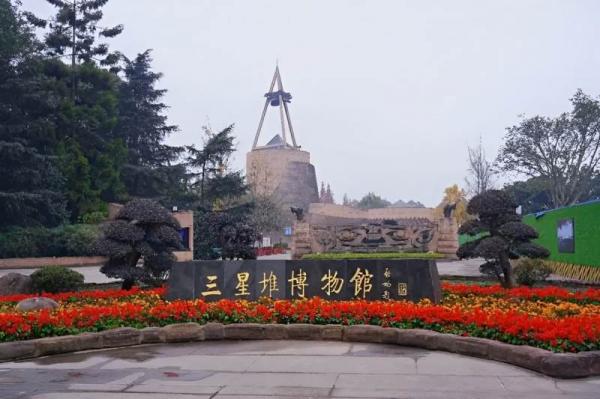
Sanxingdui Museum Facts
What Is Sanxingdui?
Sanxingdui Overview
Sanxingdui has attracted much attention due to its unique cultural characteristics and the large number of precious artifacts unearthed there, including the ever-changing masks, the celestial trees connecting heaven and earth, and the fantastic altars. The main culture of this site is known as Sanxingdui Culture (Shu Culture), which dates back more than 4,500 years to the late Neolithic Age.
Why It’s Called the "Lost Civilization"
The Sanxingdui Site is regarded as the lost civilization tied to the Ancient Shu Kingdom. The reason lies in the sudden disappearance of its highly developed bronze culture and the lack of written records, leading to a break in historical continuity. In fact, during the Shang and Zhou dynasties, there were mature oracle bone inscriptions, but no writing has been found at Sanxingdui, with only totemic symbols remaining.
Who Were the People Behind Sanxingdui?
The unique unearthed artifacts and exquisite craftsmanship of China’s Sanxingdui have aroused people's curiosity: Who were the creators behind them?
Some researchers believe that the origins of the Sanxingdui civilization may not entirely be from Earth, but may have been inspired or created by aliens in Sanxingdui. No matter whether it is true or not, it is undeniable that they reveal an ancient civilization that transcends the conventional and is filled with mystery.
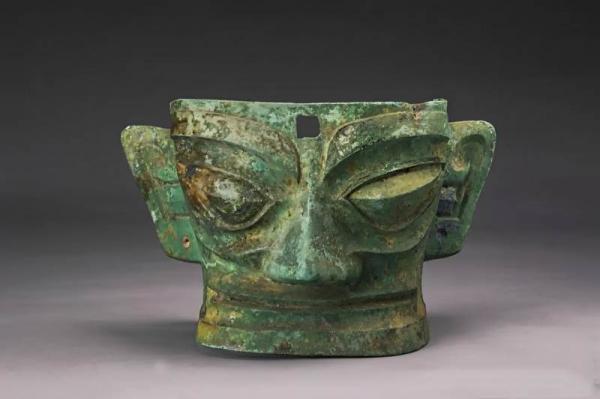
Hook: "Could Sanxingdui Rewrite Chinese History?"
The discovery of the Sanxingdui Site has been hailed as one of the "Ninth Wonders of the World." In the past, people mostly believed that the Bronze Age of China started from the Xia, Shang, and Zhou dynasties. However, the unearthing of thousands of bronze artifacts from the Sanxingdui, with their superb casting techniques and quantity, reveals that the southwestern region of China had already entered a highly developed Bronze Age about 1,000 years before the Xia dynasty. To some extent, this rewrites Chinese history.
The Historical Significance of Sanxingdui in Chinese Archaeology
Sanxingdui holds an important value and significance for the study of ancient civilizations. The discoveries at Sanxingdui indicate that the upstream areas of the Yangtze River nurtured a splendid ancient civilization and provided crucial materials for the study of the ancient Shu civilization. Besides, they enhance people's knowledge of ancient technologies and crafts, aiding in the exploration of ancient cultural exchanges and interactions.
The Discovery and Excavation of Sanxingdui
Sanxingdui ruins were first discovered by chance. In 1929, Yan Daocheng, a farmer from Guanghan, Sichuan, accidentally found a pit of jade artifacts while digging a water ditch. The uniquely shaped artifacts attracted the attention of the local government. In 1934, David Crockett Graham, the director of the West China University Museum, led the first archaeological excavation, unearthing over 600 cultural relics, gradually unveiling the mystery of Sanxingdui.However, due to frequent wars at that time, the archaeological work was interrupted. It was not until 1986, with the discovery of two sacrificial pits, that Sanxingdui truly "awakened the world with its revelation". Thousands of precious cultural relics come into view of the world, including the bronze standing figure, bronze sacred tree, gold mask, and more.
The Role of Guanghan and the Sanxingdui Archaeological Site
The Sanxingdui Archaeological Site in Guanghan is regarded as one of the greatest archaeological discoveries of the 20th century. It is the center of ancient civilization in the upper reaches of the Yangtze River as well as one of the important origins of Chinese civilization, contributing to the exploration of the evolution of early human political organizations and social forms. The abundant cultural relics discovered there complete the sequence of important artifacts in the evolution of Chinese civilization.
Ongoing Research and Excavation Efforts
The archaeological excavation area of the Sanxingdui Archaeological Site covers less than 20,000 square meters, accounting for about one in a thousand of the total area of the entire site. The pace of archaeologists exploring the Sanxingdui civilization has never stopped. Currently, the excavation and research work of Sanxingdui Archaeology has been carried out in a planned and orderly manner.
>> Recommended 4-Day Chengdu Family Tour with Local Experiences
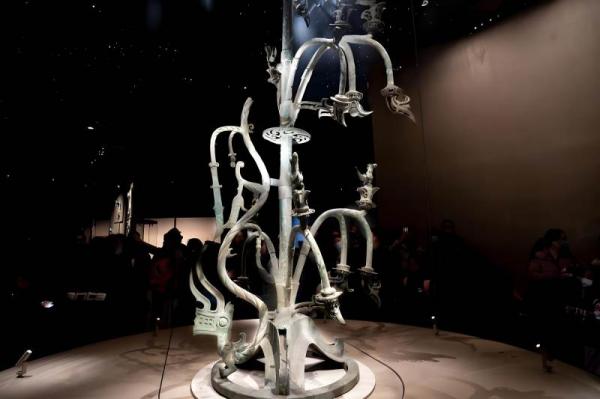
What to See at the Sanxingdui Museum: The Artifacts of Sanxingdui
Located in the northeast of the Sanxingdui Site, the Sanxingdui Museum, one of the most famous museums in China, is a modern specialized site museum that exhibits over 1,500 artifacts. The collections in the museum are unique and mysterious. Visiting there, you'll see the strangely exaggerated bronze masks, the exquisitely crafted golden staff, and the tall and dignified bronze standing figure, each indicating the extraordinary wisdom and creativity of the ancient Shu people.
Sanxingdui Bronze Masks and Head
Sanxingdui Museum has a dedicated hall for bronze masks. Most of the masks feature extended eyes and wide ears, which are said to be the physical characteristics of the ancient Shu people. Among them, the large bronze mask of Sanxingdui is the largest and most intact large bronze mask unearthed from Sanxingdui. It measures 131cm in width, 71cm in height, and 66cm in depth. Besides, over 50 human head statues were unearthed, measuring approximately 29 centimeters in height and 20.6 centimeters in width.
The Bronze Standing Figure & Bird Statues
The bronze standing figure from Sanxingdui is the tallest and most complete one of its type in existence and is hailed as the "King of Bronze Statues in the World." Standing at a height of 1.8 meters and with an overall height of 2.62 meters, it weighs approximately 180 kilograms. The Sanxingdui Museum also houses the bronze bud and standing bird statue, which is a bronze artifact from the Shang Dynasty.
The Mysterious Bronze Tree
The large bronze tree of Sanxingdui is the grand exhibit in the Comprehensive Gallery of the Sanxingdui Museum. It consists of two parts: the base and the tree. The base is a circular chassis, atop which a tripartite bracket converges to form a mountain-shaped tree pedestal. The tree top is incomplete, and its branches are divided into three layers, with three branches on each layer. Each branch has two fruit branches, one pointing upwards and the other hanging down
The Gold Mask: Most Iconic Treasure
Sanxingdui’s gold mask is an iconic treasure unearthed from the Sanxingdui Site. It was overall shaped by a hammering gold sheet. The eyebrows, eyes, and mouth are hollowed out, and the nose is raised, demonstrating the superb metalworking skills of the ancient Shu civilization. This artifact belongs to the accessory decoration of the bronze head statues from Sanxingdui.
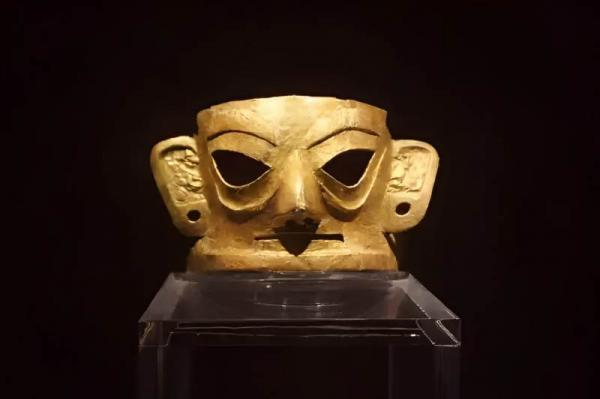 .
.
Jade Artifacts and Decorative Pieces
Sanxingdui has also unearthed an astonishing number of jade artifacts and decorative pieces that are rich in variety and exquisitely crafted. Jade of Sanxingdui includes jade disks, jade spears, jade dagger-axes, jade chisels, jade rings, and more. Some exhibit unique designs and are small and exquisite, while others are carved with intricate patterns, recording the enigmatic history of ancient Shu.
What Do the Faces of Sanxingdui May Represent
The bronze masks and faces of Sanxingdui have sparked countless conjectures with their strange and exaggerated designs. Some scholars believe that the "extended-eye" design may be a commemorative and exaggerated representation of the ancient Shu people's ancestor, Cancong. While others think that the exaggerated features of the faces, such as the ears like Clairaudient and eyes like Clairvoyant, represent the ancient Shu people's desire to possess extraordinary perceptual abilities.
Sanxingdui Museum Travel Guide
Best Time to Visit Sanxingdui Museum
The Sanxingdui Museum is suitable for visiting throughout the year. To avoid the crowds, steer clear of visiting there during China's public holidays, such as the Spring Festival, the May Day Holiday, and the National Day Holiday. Additionally, there tend to be fewer people before 9 am or after 4 pm on weekdays, providing a better visiting experience
How to Get to Sanxingdui Museum from Chengdu
1. Bus: Take bus no. 1, 7, 45, 63, 69, 70, 71, 83, 302 to Zhaojuesi (Zhaojue Temple) Station, and then take regular bus to Guanghan City. After arrival, take bus no. 6 to Sanxingdui Museum, or take bus no.10 to Sanxingdui.
2. Train: Take a bullet train from Chengdu East Rail Station to Guanghan North, and then take a taxi to the museum.
3. Private car: Easy Tour China can arrange private Chengdu tour to Sanxingdui Museum which will be more comfortable and convenient.
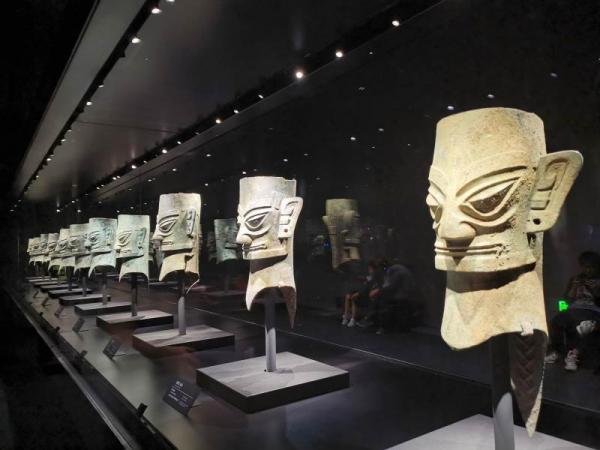
FAQs About Sanxingdui
Q: Can Tourists Visit the Excavation Site?
A: No, the excavation site is not open.
Q: Is Sanxingdui Part of the Shang Dynasty?
A: Sanxingdui was not solely from the Shang Dynasty. The Sanxingdui culture spans from the Neolithic Age to the Xia, Shang, and Zhou dynasties, lasting for 2,000 years.
Q: Are Photos Allowed There?
A: You are allowed to take photos of Sanxingdui inside the museum as a keepsake. But do not use flashlights or selfie sticks.


